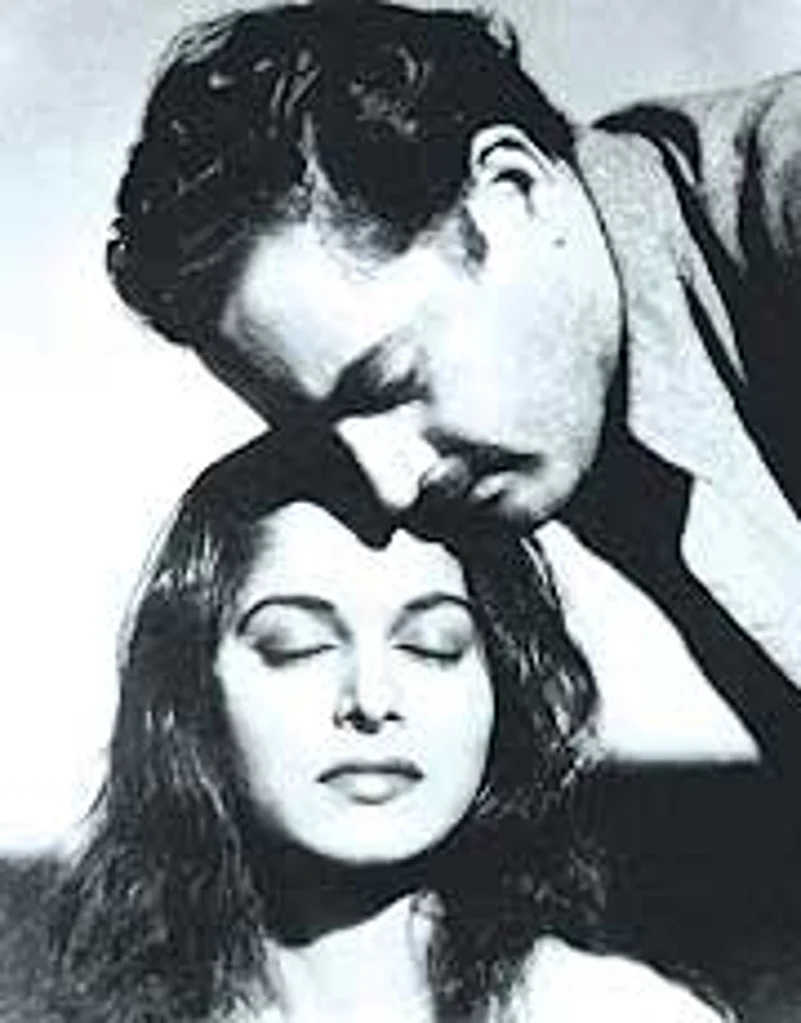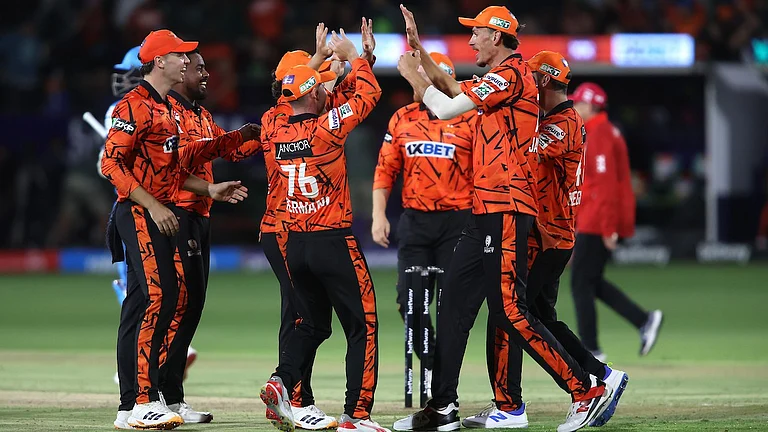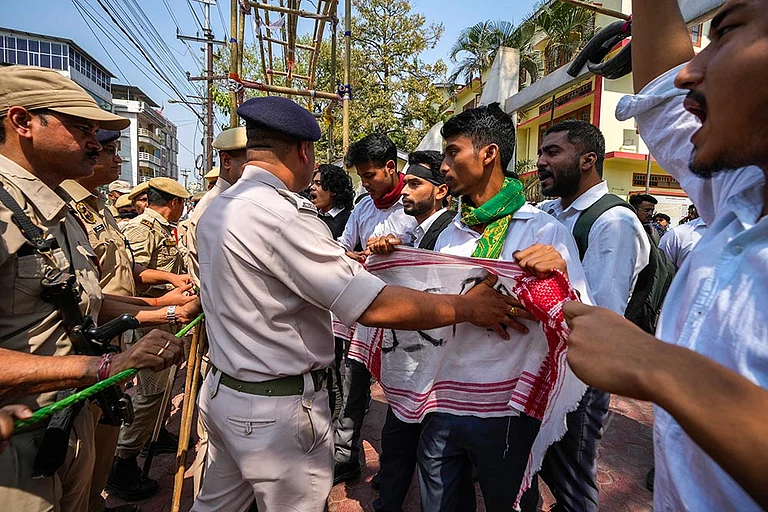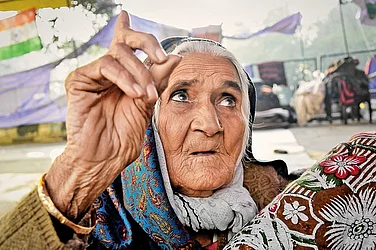Ours is a country with a very strong oral tradition, where people read less and listen more. And Hindi film songs, which have so eloquently reflected the morality of their times, form an important part of that tradition. A journey into the lyrics of film songs is, in fact, like a crash course in Indian popular culture through the decades.
Since romance has been the backbone of filmi geet, one might conclude that Indians are a very romantic people. In fact, the opposite is true. The intricate social and moral fabric of Indian society has always made a simple man-woman relationship into a kind of participative sport, played by society in the arena of restriction and sanction. Implicit in this is the fear that an unbridled man-woman relationship has the power to shake up and threaten established social codes and structures, like the joint family system and the sub-units of relationships.
Since open display of romantic emotions was taboo, it was expressed mainly through the medium of poetry and song. And film songs conveyed the entire gamut of romantic emotions with memorable effect, whether it was to convey your feelings to the object of your affection (Tere husn ki kya tareef karoon) or to express your own emotions (Meri aankhon se koi neend liye jata hai). For every facet of love, there was a lyric that spoke from the heart, through the transparent veil of the Hindi film song: desire (Aaj sajan mohe ang laga lo); playfulness (Hum aap ki aankhon mein); longing (Abhi na jao chhod kar); togetherness (Tere mere sapne); grievance (Apni to har aah ik toofan hai); pain and catharsis (Mann re tu kahe na dheer dhare); or appreciation of physical beauty (Chandan sa badan). The list is endless.
The code of social conduct decreed that such things could not be said through dialogue or be shown in a scene. That's why longing and pathos are the dominant emotions in so many of our earlier songs, written in times when a boy and girl dared do no more than glance at each other the first five times they met, and wait for weeks before they spoke to each other. The longing, the intensity, was built up gradually. In 99 per cent of the cases, love lost and society won.
Another factor, I feel, that underlines the language and the tenor of the songs of the early 1950s and, to some extent, the 1960s, was the fusion between elements of Mughal aristocratic tehzeeb and those of Brahminical restraint. The tunes were heavily inspired by Hindustani classical music ragas and thumris—voices were classically trained and refined.

| Heady notes: Guru Dutt and Waheeda Rahman in Pyaasa |
If the films of the 1950s were about socio-political optimism and idealism, the 1960s were marked by a slight disillusionment. Gentle romance now crept into films, becoming more overt in the 1970s, while the 1980s and 1990s saw major social changes, with voices from different social strata coming into the limelight. Songs like 'Achha sila diya tune mere pyaar ka' or 'Tum to thehre pardesi' went on to become huge hits. Filmi lyrics now displayed more rustic folk influences, which may have been jarring to the cultured ear of a section of listeners, but appealed to a larger audience. In a sense, it represented a kind of democratisation of music. Tunes, lyrics and even the kind of voices used marked the beginning of the man-on-the-street's expression finding its place in the mainstream of film music. Closer to our times, the success of Himesh Reshammiya can be understood if we view it through this lens.
This brings me to ponder on the romantic morality—if one can call it that—of the earlier decades and now. One key aspect that has seen a definite decline is the worshipping-the-lover aspect. From songs like 'Prem jogan ban' or 'Ek but banaoonga tera aur pooja karoonga' or 'Tumhi mere mandir, tumhi meri puja, tumhi devtaa ho', the devotion, the complete surrender in romance has decreased today, reflecting a change in social mores.

Dev Anand and Sadhna in Hum Dono
Earlier, the distance—physical and societal—between a romantic pair played a big role in creating a mystique and a larger-than-life aura around a romance. Today, repression, taboos and stigmas associated with romance are considerably less. So is the mystique. The ethereal, unattainable part of romance is now on the backburner. Correspondingly, there is less symbolism in today's lyrics, and fewer metaphors. Many would argue that songs like 'Laagi tumse man ki lagan' or 'Tum se hi' are reminiscent of the melodious love songs of yore, that they transport you to a softer space. I agree wholeheartedly, but with the caveat that these songs are in the "classic romance genre"—one that will live forever, just as classic love stories like Heer-Ranjha and Romeo-Juliet have. Such songs today have the nostalgic, retro appeal of "this is how romance used to/should be".
Today romance is expressed and articulated quite differently. Some would cite the speed of our lives, eroding moral values, romance becoming disposable and temporary, the narrative of our cinema becoming fast-paced, with lack of space for songs and many more reasons for the change.
I would take a slightly different view. I would say that rather, romance has found a different portrayal, a newer hue. Today the man-woman bond has evolved, societal constraints are less tight, and gender equations have changed. Today's woman doesn't want or like to be referred to as 'tyaag ki murti' or devi, the ever-sacrificing and suffering one. She is more confident about herself, with her flaws as well as strengths, and wants to be accepted just as she is. And I would say that gradually, men are recognising this. There is much more interaction and easy familiarity among today's romantic couples.
Romance is a gentle sentiment. It elevates us and, paradoxically, also sinks us into depths of emotion. Songs that portray love in all its beauty and complexity, that carry with them the whiff of innocence and the intensity of passion, will never fade. But perhaps today there is more realism in romance. A desire not just for the thrill of romance but for a romantic relationship with a deeper understanding of love. Some may sigh, 'Mujhse pehli si mohabbat mere mehboob na maang'. To which I would reply, 'Rehna tu jaise hai tu...thoda sa dard tu thoda sukoon...'

























